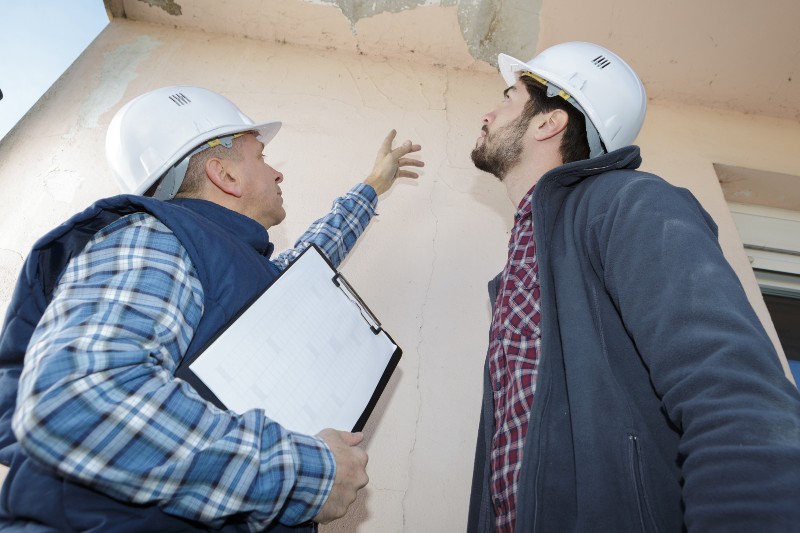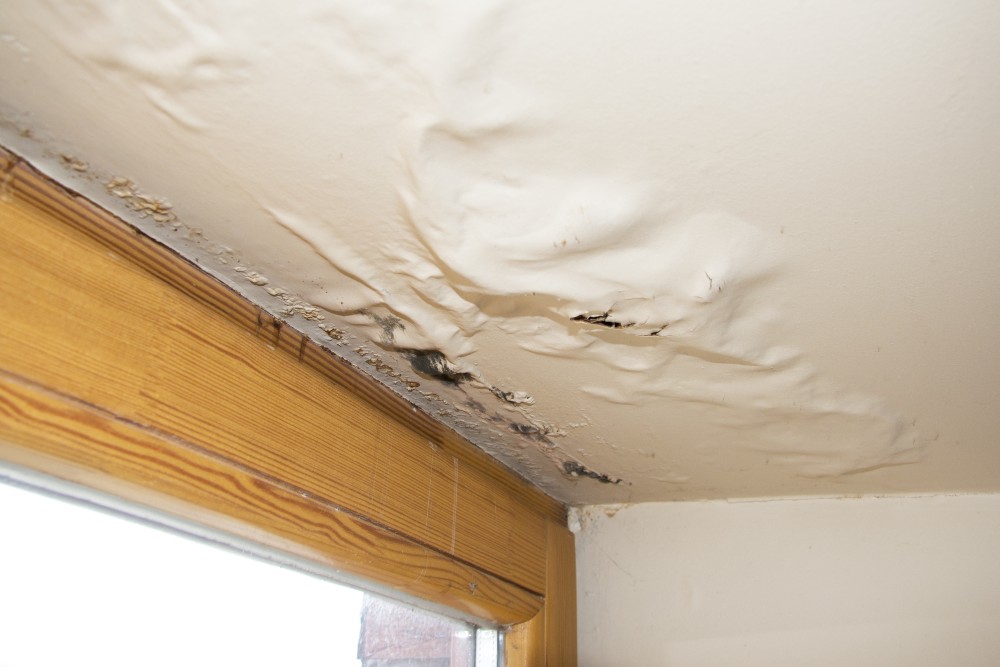When a roof starts to fail, one of the most common symptoms is leaking.
Typically, new roof leaks show up in the hours and days following a heavy rain or snow storm. Sometimes, freshly fallen snow may need to melt and begin running off the roof in order for a roof leak to be detected.
However and whenever it happens, the detection of a roof leak can be immensely frustrating. For the average homeowner, it can be nearly impossible to determine the exact location of the leak, let alone make a decision about what work will need to be done to fix it.
For most property owners, this question almost always arises upon the discovery of a roof leak, “Will my homeowners insurance pay for this?”
In this article, the roofing experts at A-to-Z Roofing & Exteriors are here to help answer this question so you can have peace of mind.
All about ‘Covered Perils’
The short answer to the question of whether or not your homeowners insurance policy covers roof leaks is yes, but only if the leak is a result of something called a Covered Peril.
In the insurance world, a ‘peril’ is the term used to refer to a specific kind of loss. Losses can be incurred due to weather events, vandalism, theft, or a host of other causes.
When it comes to roof damage, most homeowners insurance policies have structural coverage that includes the roof. This coverage is typically considered ‘Open Peril’, meaning roof leaks will be covered by the insurance coverage whenever the leak or leaks are a result of any peril that is not specifically excluded from the policy.
Some commonly excluded structural coverage perils are:
- Water leaks that result from frozen or broken pipes
- Theft
- Vandalism
- Manufacturer defects
- Corrosion
- Settling
- Wear and tear
- Pest or rodent infestations
- Defective construction
You’ll notice that ‘weather events’ are not listed above. This is because most losses that come as a result of weather events are considered ‘Covered Perils’ within the terms and conditions of most homeowners insurance policies.
[Note: Not all homeowners insurance policies are the same. Be sure to read the fine print on your own policy to determine if losses due to weather events are Covered Perils.]
Common Roof Leak Insurance Claim Circumstances
When a roof springs a leak as a result of an unforeseen weather event, most homeowners insurance policies will cover the cost required to repair the damage.
This is, of course, after the homeowner pays the deductible.
Some of the more common circumstances surrounding legitimate roof leak insurance claims are:
- Hail damage
- Damage due to fire
- Heavy winds
- Falling branches or tree limbs
- Lightning strikes
In some cases, insurance policies will cover damage caused by animals like raccoons, birds, or other animals. This type of coverage varies across the US.

Replacement Cost Repair Valuations
Once it’s been determined that your homeowners insurance policy will cover a roof leak, another common question that arises is, “How much will it cost?”. And, “Is the insurance company going to cover all of it?”.
Most insurance companies are happy to reimburse the homeowner for any roof repair or replacement costs that are in-line with fair market value. This is great news for those with a roof built within the past 10 years or so, but it can be problematic for those who have older roofs.
An insurance claim for a leak on an especially old roof—even if the cause was related to a weather event—might be denied. For this reason, it’s always important to check with your insurance provider before signing up for coverage.
Natural Disaster Exceptions
Most heavy rain or hail storms are not considered natural disasters by definition. And, this matters in the insurance world, as damage from natural disasters is almost never covered by a homeowners insurance policy.
For this kind of coverage, you would need an additional policy rider added on to your main policy. Your insurance provider would more than likely be happy to add this coverage for you if you live in an area where natural disaster coverage would make sense.
Common examples of events classified as natural disasters include:
- Flooding
- Hurricanes
- Earthquakes
- Landslides
- Sinkholes
Who to Call First, the Roofer or the Insurance Company?
When Mother Nature does her worst here in Colorado, the roof is one of the first places homeowners focus on. After a heavy rain or hail event, if a roof leak is detected, the best course of action is to begin documenting the damage with pictures and videos with a qualified roofing contractor working with you.
Contacting your insurance provider to start the claim process is best done with your roofer involved in the conversation, as there are often damages that the roofer can detect that the insurance company might overlook.

